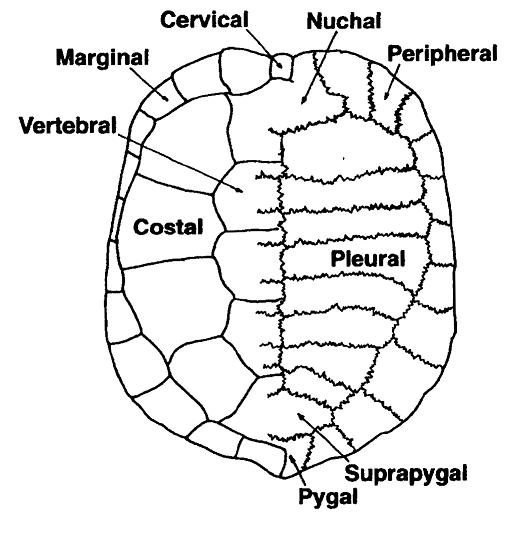|
Chelid
Chelidae is one of three living families of the turtle suborder Pleurodira, and are commonly called Austro-South American side-neck turtles. The family is distributed in Australia, New Guinea, parts of Indonesia, and throughout most of South America. It is a large family of turtles with a significant fossil history dating back to the Cretaceous. The family is entirely Gondwanan in origin, with no members found outside Gondwana, either in the present day or as a fossil.Georges, A. & Thomson, S. (2006). "Evolution and Zoogeography of Australian freshwater turtles". In: Merrick, J. R.; Archer, M.; Hickey, G. & Lee, M. (eds.) ''Evolution and Zoogeography of Australasian Vertebrates''. Sydney: Australia. Description Like all pleurodirous turtles, the chelids withdraw their necks sideways into their shells, differing from cryptodires that fold their necks in the vertical plane. They are all highly aquatic species with webbed feet and the capacity to stay submerged for long periods of t ... [...More Info...] [...Related Items...] OR: [Wikipedia] [Google] [Baidu] |
Chelodina
''Chelodina'', collectively known as snake-necked turtles, is a large and diverse genus of long-necked chelid turtles with a complicated nomenclatural history. Although in the past, ''Macrochelodina'' and ''Macrodiremys'' have been considered separate genera and prior to that all the same, they are now considered subgenera of the ''Chelodina'', further ''Macrochelodina'' and ''Macrodiremys'' are now known to apply to the same species, hence ''Chelydera'' is used for the northern snake-necked turtles. ''Chelodina'' is an ancient group of chelid turtles native to Australia, New Guinea, the Indonesian Rote Island, and East Timor. The turtles within this subgenus are small to medium-sized with oval shaped carapace. They are side-necked turtles, meaning they tuck their head partially around the side of their body when threatened instead of directly backwards. ''Chelydera'' represents those species that have often been termed the ''Chelodina'' B group or thick necked snake neck turtl ... [...More Info...] [...Related Items...] OR: [Wikipedia] [Google] [Baidu] |
Emydura Macquarii
''Emydura macquarii'' (common names include Murray River turtle, Macquarie River turtle, eastern short-necked turtle, eastern short-neck turtle and southern river turtle) is a species of turtle in the family Chelidae. It is a wide-ranging species that occurs throughout many of the rivers of the eastern half of Australia. It is found primarily in the Macquarie River basin and all its major tributaries, along with a number of coastal rivers up the New South Wales Coast. It is also found in the coastal Queensland rivers and the Cooper Creek ecosystem, along with Fraser Island. It is often infected with the flatworm '' Choanocotyle elegans''. Sue, Lindsay Jue (1998). "Description and life-cycle of two new species of ''Choanocotyle'' n. g. (Trematoda: Plagiorchiida), parasites of Australian freshwater turtles, and the erection of the family Choanocotylidae". ''Systematic Parasitology'' 41 (1): 47–61. Collection history and discovery This species has a long and complicated nomenc ... [...More Info...] [...Related Items...] OR: [Wikipedia] [Google] [Baidu] |
Myuchelys
The ''Myuchelys'' is a genus of turtles, the Australian saw-shelled turtles, in the family Chelidae and subfamily Chelodininae. They inhabit the headwaters and tributaries of rivers within their range and this led to the name ''Myuchelys'', which is formed from the Aboriginal word ''myuna'' meaning clear water and the Greek ''chelys'' meaning turtle. They have a short neck and the intergular scute completely separates the gular scutes. They have no alveolar ridge separating them from the snapping turtles of the genus ''Elseya''. Species The genus currently contains these cryptic small species of freshwater turtles, endemic to eastern and northern Australia: * '' Myuchelys bellii'', Namoi River snapping turtle Gray, 1844Gray, J. E. 1844. ''Catalogue of the Tortoises, Crocodiles and Amphibaenians in the Collection of the British Museum''. London. Edward Newman. 80pp. * '' Myuchelys georgesi'', Bellinger River snapping turtle Cann, 1997Cann, J. 1998a. Georges short-neck turtle. '' ... [...More Info...] [...Related Items...] OR: [Wikipedia] [Google] [Baidu] |
Elseya Albagula
''Elseya albagula'', commonly known as the white-throated snapping turtle, is one of the largest species of chelid turtles in the world, growing to about carapace length. The species is endemic to south-eastern Queensland, Australia, in the Burnett, Mary, and Fitzroy River drainages. This species is entirely aquatic, rarely coming ashore and is chiefly herbivorous, feeding on the fruits and buds of riparian vegetation, algae, and large aquatic plants. First proposed as a species by John Goode in the 1960s,Goode J. 1967. ''Freshwater tortoises of Australia and New Guinea (in the family Chelidae)''. Melbourne: Landsdowne. 155 pp. it was finally described in 2006. The species is named from the Latin ''alba'' = white and ''gula'' = throat, which is a reference to the white blotching present on the throats of adult females in the species. The type locality for the species is the Burnett River in south-eastern Queensland, but it is also found in the Mary and Fitzroy River draina ... [...More Info...] [...Related Items...] OR: [Wikipedia] [Google] [Baidu] |
Pseudemydura Umbrina
The western swamp turtle or western swamp tortoise (''Pseudemydura umbrina'') is a critically endangered species of freshwater turtle endemic to a small portion of Western Australia. It is the only member of the genus ''Pseudemydura'' in the monotypic subfamily Pseudemydurinae. It is the sister taxon to the subfamily Chelodininae. As a consequence of the greatly altered habitat in the area in which it occurs near Perth, Western Australia, it exists in small fragmented populations, making the species critically endangered. Taxonomy The accepted description of the species by Friedrich Siebenrock was published in 1901. The first specimen of the western swamp tortoise was collected by Ludwig Preiss in 1839 and sent to Vienna Museum. There it was labelled "New Holland" and was named ''Pseudemydura umbrina'' 1901 by Seibenrock. No further specimens were found until 1953. In 1954, Ludwig Glauert named these specimens ''Emydura inspectata'', but in 1958, Ernest Williams of Harvard Uni ... [...More Info...] [...Related Items...] OR: [Wikipedia] [Google] [Baidu] |
Rheodytes
''Rheodytes'' is a genus of turtle in the Chelidae family from Australia. It contains the following species: * Fitzroy River turtle (''Rheodytes leukops'') * † ''Rheodytes devisi'' (Pleistocene The Pleistocene ( , often referred to as the ''Ice age'') is the geological Epoch (geology), epoch that lasted from about 2,580,000 to 11,700 years ago, spanning the Earth's most recent period of repeated glaciations. Before a change was fina ...) References Turtle genera Reptile genera with one living species Taxonomy articles created by Polbot {{turtle-stub ... [...More Info...] [...Related Items...] OR: [Wikipedia] [Google] [Baidu] |
Star Wars Resistance
''Star Wars Resistance'' is an American 3D animated comic science fiction television series produced by Lucasfilm Animation. It follows Kazuda Xiono, a New Republic pilot who is recruited by the Resistance to spy on the growing threat of the First Order shortly before and during the events of the sequel trilogy. The series premiered on Disney Channel on October 7, 2018, and the next day it debuted on Disney XD in the United States and worldwide. Twelve shorts debuted on the Disney Channel YouTube channel in December 2018. The second and final season premiered on October 6, 2019 on Disney Channel, Disney XD and DisneyNow. The series ended on January 26, 2020 after forty episodes. ''Resistance'' received generally positive reviews from critics. The series was nominated for the Primetime Emmy Award for Outstanding Children's Program for both of its seasons. It won the Saturn Award for Best Animated Series on Television in 2019 for its debut season. Cast and characters ... [...More Info...] [...Related Items...] OR: [Wikipedia] [Google] [Baidu] |
Pedro Trebbau
Pedro Trebbau (born Karl Peter Trebbau Millowitsch; 20 May 1929 – 16 January 2021) was a German-born Venezuelan zoologist. His career was characterized by the promotion and preservation of Venezuelan wildlife and nature. His research and collaboration with the herpetologist Peter Pritchard produced the still-extant reference book on The Turtles of Venezuela. Biography Trebbau was born in Cologne, where he very early on showed a keen interest in the natural world. He obtained a bachelor's degree in biology at the universities of Frankfurt and Freiburg, as well as a veterinary degree from the University of Giessen. He arrived in Venezuela in 1953 and enrolled at the Faculty of Veterinary Medicine of the Central University of Venezuela (UCV), based in Maracay, Aragua. Shortly afterwards he decided to remain in Venezuela, and obtained Venezuelan nationality in 1957.Albor Rodríguez: ''TREBBAU. Maestro por naturaleza''. Venezuela: Ediciones La Fauna KPT, 2018. . His work in Vene ... [...More Info...] [...Related Items...] OR: [Wikipedia] [Google] [Baidu] |
Pelomedusidae
:''Alternatively, "Pelomedusidae" may refer to the Pelomedusoidea. See below for details.'' Pelomedusidae is a family of freshwater turtles endemic to sub-Saharan Africa, including Madagascar, São Tomé, and the Seychelles(Although this pop. may have been introduced by humans). They range in size from in carapace length, and are generally roundish in shape. They are unable to fully withdraw their heads into their shells, instead drawing them to the side and folding them beneath the upper edge of their shells, hence are called African side-necked turtles. The family contains two living genera. They are distinguished from their closest relatives by a hinge in the front section of the plastron.Obst, Fritz Jürgen (1998): elomedusinae ''In:'' Cogger, H.G., & Zweifel, R.G. (eds.): ''Encyclopedia of Reptiles and Amphibians'': 112-113. San Diego: Academic Press. . Pelomedusidae spends most of its time in the mud at the bottom of rivers or shallow lakes, where they eat invertebrate ... [...More Info...] [...Related Items...] OR: [Wikipedia] [Google] [Baidu] |
Longissimus Dorsi
The longissimus ( la, the longest one) is the muscle lateral to the semispinalis muscles. It is the longest subdivision of the erector spinae muscles that extends forward into the transverse processes of the posterior cervical vertebrae. Structure Longissimus thoracis et lumborum The longissimus thoracis et lumborum is the intermediate and largest of the continuations of the erector spinae. In the lumbar region (longissimus lumborum), where it is as yet blended with the iliocostalis, some of its fibers are attached to the whole length of the posterior surfaces of the transverse processes and the accessory processes of the lumbar vertebrae, and to the anterior layer of the lumbodorsal fascia. In the thoracic region (longissimus thoracis), it is inserted, by rounded tendons, into the tips of the transverse processes of all the thoracic vertebrae, and by fleshy processes into the lower nine or ten ribs between their tubercles and angles. Longissimus cervicis The longissimus cervic ... [...More Info...] [...Related Items...] OR: [Wikipedia] [Google] [Baidu] |


